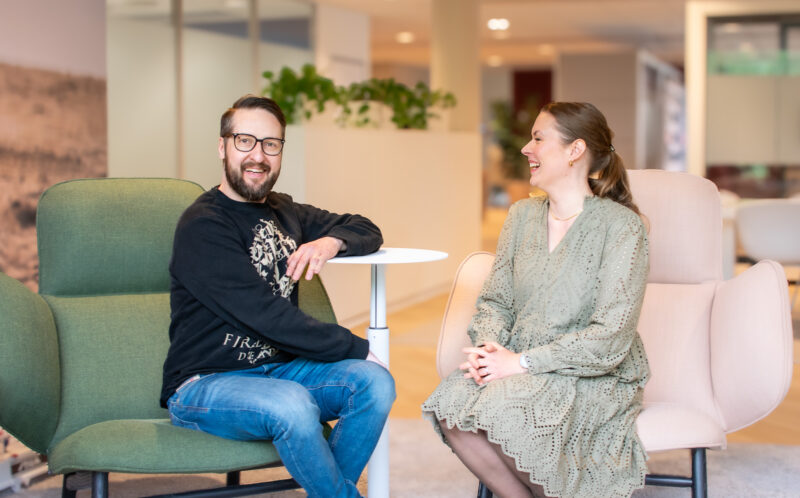Is AI your friend or foe? How to avoid digital madness on your transformation journey
Digital transformation is about a more efficient and people-centred working culture. Therefore, success depends not only on technology, but also on people. Lassi Kurkijärvi, CTO at Sofigate, explains how to avoid “digital madness” on the transformation journey.
Technological change always raises fear. For example, when train travel became popular in Britain in the 1850s, the press began to publish articles speculating on whether the unprecedented speed of trains would damage passengers’ brains. Many feared “train madness”.
Now there are very similar fears about digital services and artificial intelligence: digitalisation is also feared to drive us crazy in a way. More and more people fear that machines will take over and subjugate us. Many worry that the more tasks are transferred from humans to machines, the less room there will be for creativity, emotion and humanity. Both companies and the people who work in them suffer the consequences of these fears.
I believe that many of these fears are unfounded. Rather, I believe that the more digitalisation takes over routine tasks, the more room there will be for creativity and human interaction. The collaboration between machines and people is about a new kind of efficiency, which comes from allowing people to concentrate on being human.
This is also at the heart of the digital transformation of businesses and organisations. Although organisations are digitalising their operations using out-of-the-box platforms and services, the key is people, not technology.
Three main principles for successful transformation
For an organisation to succeed in its transformation and avoid “digital madness”, it needs to remember three key principles.
1. People lead, technology acts
The success of a digital transformation depends in part on the external resources used for the transformation. But even more so, it depends on the organisation’s own ability to transform itself. This is why investments in transformation should not only focus on technology, but even more on business redesign and personnel engagement.
Of course, transformation must deliver measurable results and the investment made must pay for itself. Ultimately, however, it is not the technology that delivers the results. Results are delivered thanks to better management. Digital transformation is a way for companies to increase their efficiency by empowering people to do what they do best.
2. Technology enables a new way of working
Artificial intelligence and other digital systems cannot replace human thinking, but they can make it more efficient. At its best, it is no longer about human and machine, but a new kind of collaboration between human and machine.
In healthcare, for example, AI can both free up time for patient work and improve outcomes. At HUS, the largest provider of specialised healthcare in Finland, doctors no longer need word processors to record their dictations; instead, the machine interprets speech. Elsewhere, a machine vision system instructs doctors to find things worth noting in X-rays or tissue samples. Together, humans and AI can do better than either humans or machines alone.
For a company planning a digital transformation, this highlights the importance of investing in the right core business systems. At the same time, the business must be streamlined to take advantage of the opportunities opened up by technology.
3. Technology does not stifle creativity, it unleashes it
One of the most common misconceptions about technology is the fear of “digital madness”, i.e., that technological platforms will restrain human thinking and force organisations to replicate formulaic solutions, shackled by systems. However, if this is where you end up, the fault lies not with the technology, but with its misuse. Properly designed technology does not make an organisation less human – quite the opposite.
There is no point in trying to reinvent the wheel by building your own, inevitably cumbersome systems. It is better to jump on the shoulders of giants: to leverage global platforms that represent the latest technological advances and to focus the organisation’s resources and creativity on developing new ways of working and competitive advantage.
An old-fashioned way of leading stands in the way of development
Digital transformation is not about submitting to machines, but about learning new ways of working and, ideally, creating a more people-centric work culture. It is a big change, but there is no need to fear artificial intelligence and digital platforms any more than there was once a need to fear the railways.
Humanity tends to overestimate the short-term impact of technological change and underestimate its long-term effects. That is why digital transformation should be pursued with ambition, but not hastily. It is demanding on organisations and society as a whole, but the potential benefits are also enormous.
We need artificial intelligence and the productivity boost it enables to tackle the challenges of the climate crisis, ageing populations and other problems of our time. It is not the technology itself that stands in the way of progress, but the old-fashioned way of running organisations. That’s why adapting to change must start now.
The author
Lassi Kurkijärvi has been building digital businesses for a quarter of a century. Today, he helps Finnish companies in digital transformation in his role as Executive CTO at Sofigate. His passion is humanity in all its forms: change is ignited by inspiration and engagement – and extinguished by the lack of them.


